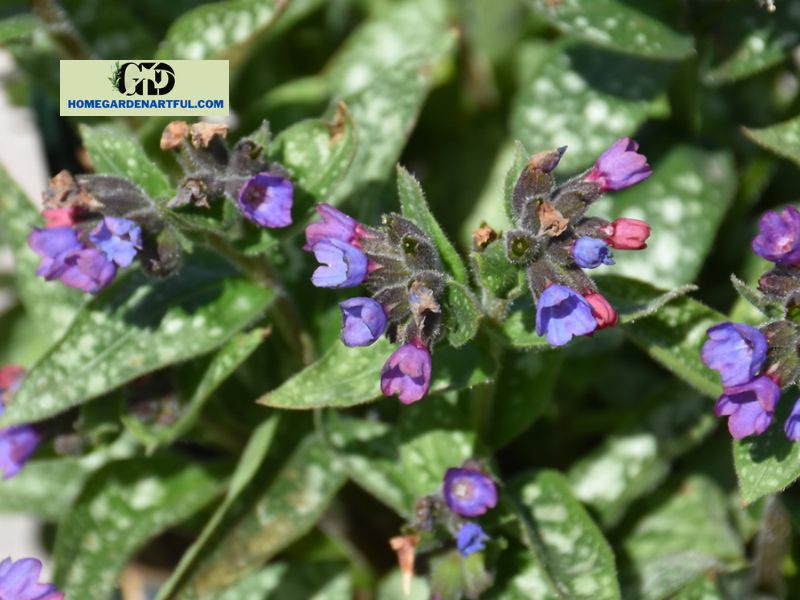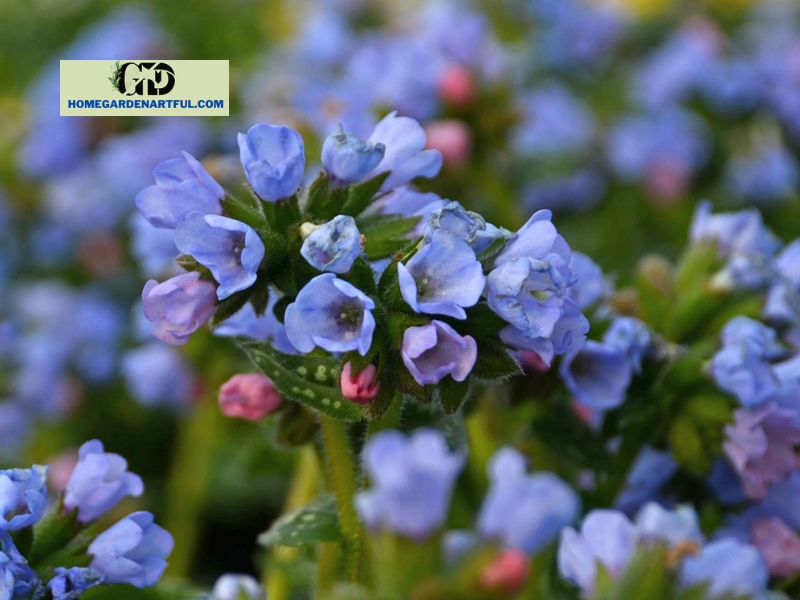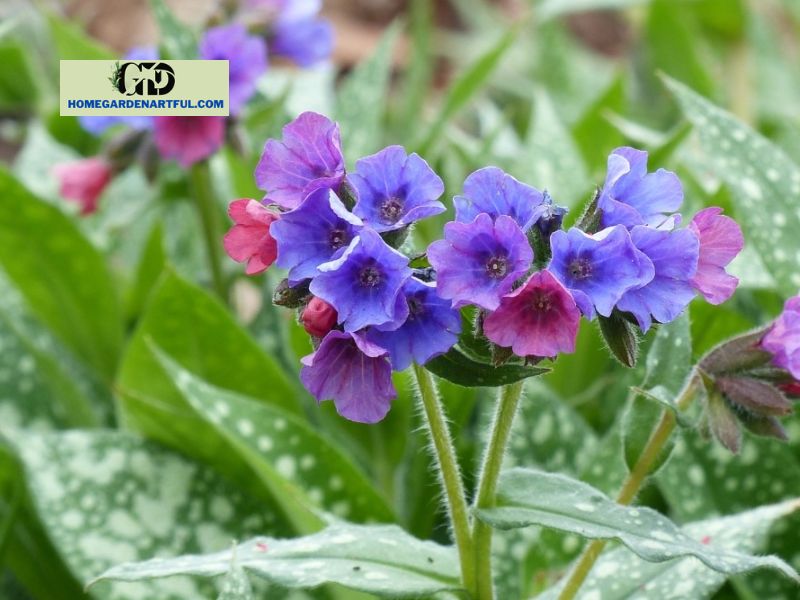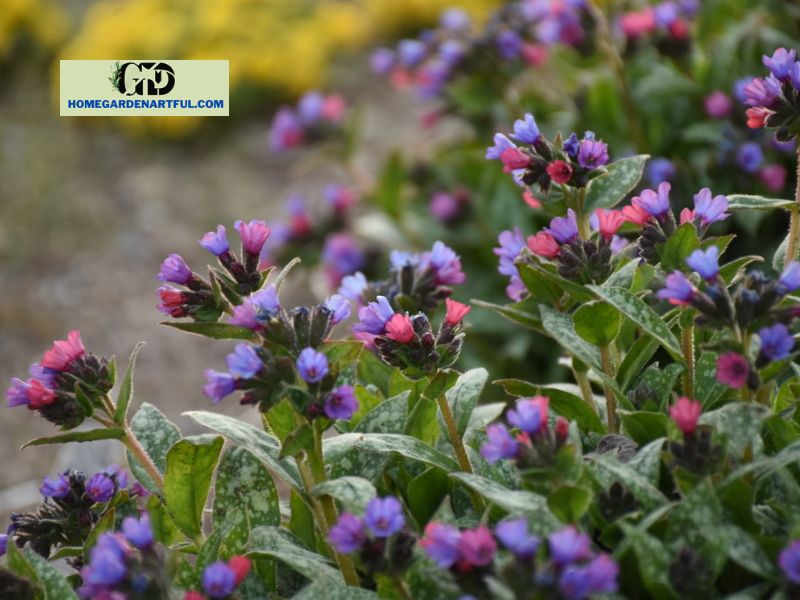Spot On Lungwort is not the most visually striking garden plant, but it does have some lovely characteristics. Among the first perennials to bloom in the early spring is this one. It features charming small pink bell-shaped flowers that, as they become older, turn purple.
A lovely and fascinating mounded variety that’s perfect for shady garden beds, borders, and pots; rich blue blooms emerge from salmon-colored buds, giving lush, green foliage flecked with silver a two-toned impression; superb cut flower quality. Discover at homegardenartful.com!
What Is Unique About Spot On Lungwort?

From mid to late spring, Spot On Lungwort produces exquisite clusters of bell-shaped flowers with a royal blue color at the ends of the stalks. The flowers emerge from unique salmon flower buds. The flowers are perfect for making bouquets. Throughout the season, its lovely, narrow leaves maintain their distinguishing silvery dots and stay green in hue.
Landscaping Features
The herbaceous perennial Spot On Lungwort has a mounded shape. Although its medium texture fits in well with the environment, it can always be effectively balanced by a few coarser or finer plants.
Since this plant requires little upkeep, it should be pruned in the late fall to get ready for winter. This plant doesn’t really appeal to deer, who will typically ignore it in favor of sweeter delicacies. It doesn’t have any noteworthy drawbacks.
Planting & Growing

When Spot On Lungwort reaches maturity, it will be around 14 inches tall and 20 inches wide. Plants should be separated by about 20 inches when grown in bulk or used as bedding plants. It usually doesn’t need facer plants in front because its foliage stays dense all the way to the ground. It has a medium growth rate and, in perfect circumstances, should live for about ten years. This plant, being a herbaceous perennial, will typically die back to the crown every winter and then sprout new growth from the base every spring. When the crown is not as visible in the late winter, don’t touch it!
Partial shade-to-shade is ideal for this plant. It should never be allowed to dry out because it prefers to grow in ordinary to moist circumstances. Once established, this plant doesn’t need much fertilizer. It doesn’t care about the pH or type of soil. It can tolerate some levels of urban pollution. This unique type is a hybrid of two different species. It can be propagated by division, but as it’s a cultivated variety, keep in mind that there can be limitations or prohibitions on how it can be born.
Spot On Lungwort makes an excellent choice for both outdoor pots as well as containers as well as for the yard. It frequently serves as the “filler” in the “spiller-thriller-filler” container combination, giving the thriller plants something to stand out against in the form of a profusion of flowers and leaves. Keep in mind that plants may need more frequent watering when grown in outdoor baskets and containers than they would in a yard or garden.
Frequently Asked Questions

How should I maintain my lungwort?
Perennial lungwort is rather fuss-free. Plant it in a spot that receives full shade to part sun. Once established, it won’t need further water—only in the event of a dry period. Before it flowers, trim it back in the fall or very early in the spring. If it develops powdery mildew in the late summer, I generally give it another trim. It will raise fresh foliage.
Is lungwort invasive?
Although lungwort is invasive, it is aggressive. Through its rhizomes, it disperses. It doesn’t, however, spread swiftly or appear in your garden at random. It remains where it is and is readily excavated and removed if needed. In my opinion, several specialist types exhibit even lower levels of aggression compared to the standard variety.
How is lungwort prepared for winter?
For gardeners in colder climates, I often harvest lungwort in the autumn. This facilitates the process when spring arrives and it begins to bloom. But in the spring, it can also be trimmed back. It’s not always necessary to reduce it in any way. The old growth will ultimately dissolve into the earth, but I like to chop them back to give the garden a more ordered appearance. rnIn warmer climates, lungwort is a perennial that is semi-evergreen. To maintain its aesthetic appeal, you will simply need to cut away the aging and dead sections.


